Gorillas born in the wild are only found in Africa’s tropical and subtropical areas. They can be found in high mountainous regions, dense forests, and lowland marshes. Gorillas are the largest living primates and can live up to 40 years in the wild. But what do we know about the beginning stages of this animal’s life as a baby gorilla?
Baby gorillas, also known as infants, weigh about 4 lb (1.8 kg) when they are born. They have pale grey-pink skin, sparsely covered with hair, and the patterns and wrinkles on their nose are part of their identity. Baby gorillas stay with their mother till they are about four years old.
Baby gorillas love to wrestle, play with their siblings, and love the attention they get from their mothers. Read on for more information about the baby gorilla.
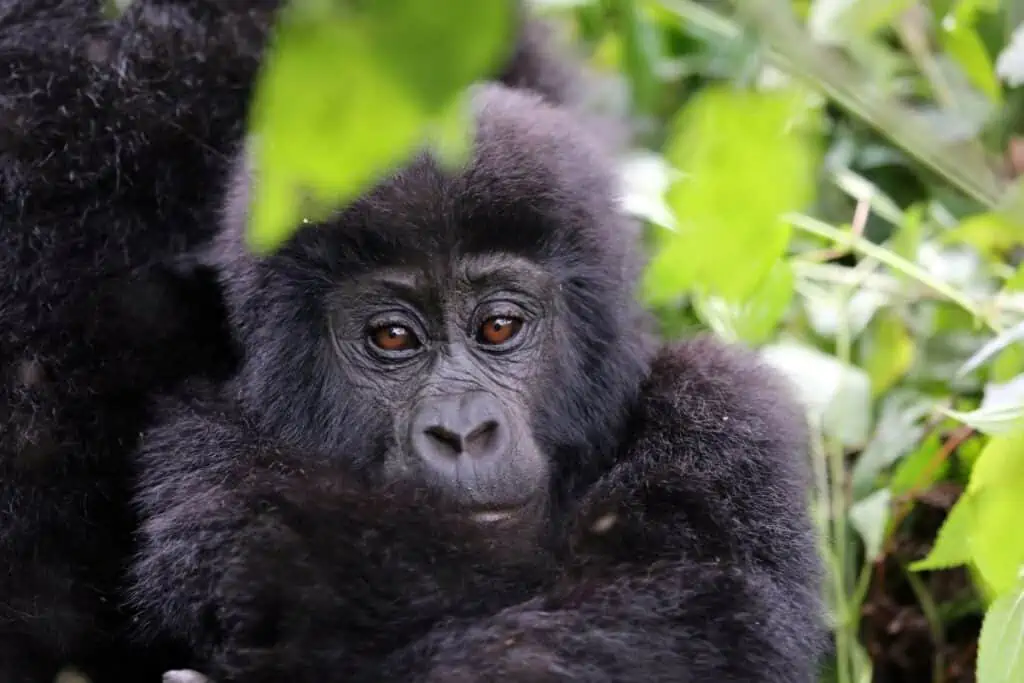
- A baby gorilla is born
- Does a baby gorilla have teeth?
- Do baby gorillas cry?
- Milestones of an infant gorilla
- What does a baby gorilla eat?
- How does a baby gorilla walk?
- Who takes care of a baby gorilla within the troop?
- How long do young gorillas stay with their mother?
- Where does a baby gorilla sleep?
- Do baby gorillas have natural predators?
- Are baby gorillas on the endangered list?
- Final thoughts on baby gorillas
A baby gorilla is born
The gestation period of a gorilla mom is around 8.5 months, and when born, the baby gorilla weighs about 4 lb (1.8 kg).
The baby gorilla, or infant, has pale grey-pink skin, which is sparsely covered with hair. Just like human babies, newborn baby gorillas cannot coordinate their movements and see very little, so they are quite helpless.
The infant will search for the mother’s nipple and, with their strong hands and feet, will cling to their mother.
From birth, the gorilla mother will assist and cuddle the infant while it clings and holds onto her tummy or chest.
The baby gorilla is born with unique patterns and wrinkles on its nose. Throughout its life, this will differentiate the infant from other gorillas.
Researchers will use the unique nose print to identify gorillas in the field.
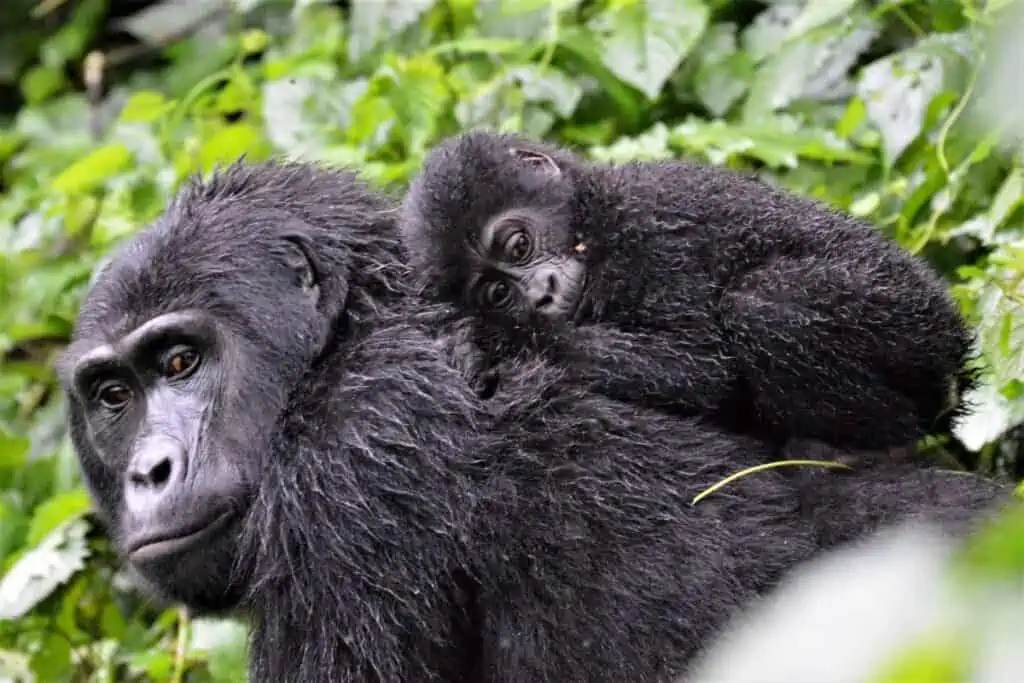
Does a baby gorilla have teeth?
An infant gorilla does not have teeth when it is born.
The infant will gradually grow deciduous (baby) teeth to be able to start eating solid food at the age of about eight months.
As the baby gorilla grows, the baby teeth will be replaced by 32 adult teeth, much the same as humans.
Do baby gorillas cry?
A baby gorilla will make a noise when hungry or uncomfortable, but this sound is not the sound that a human baby would make.
sound is more like a soft grunting noise, and the infant gorillas rarely make a crying noise as they are held close by their mother 24/7.
Whenever they fuss, the mother will immediately care for the baby gorilla by cuddling or patting the little body.
Baby gorillas love to be patted, and mother and baby form a strong bond.
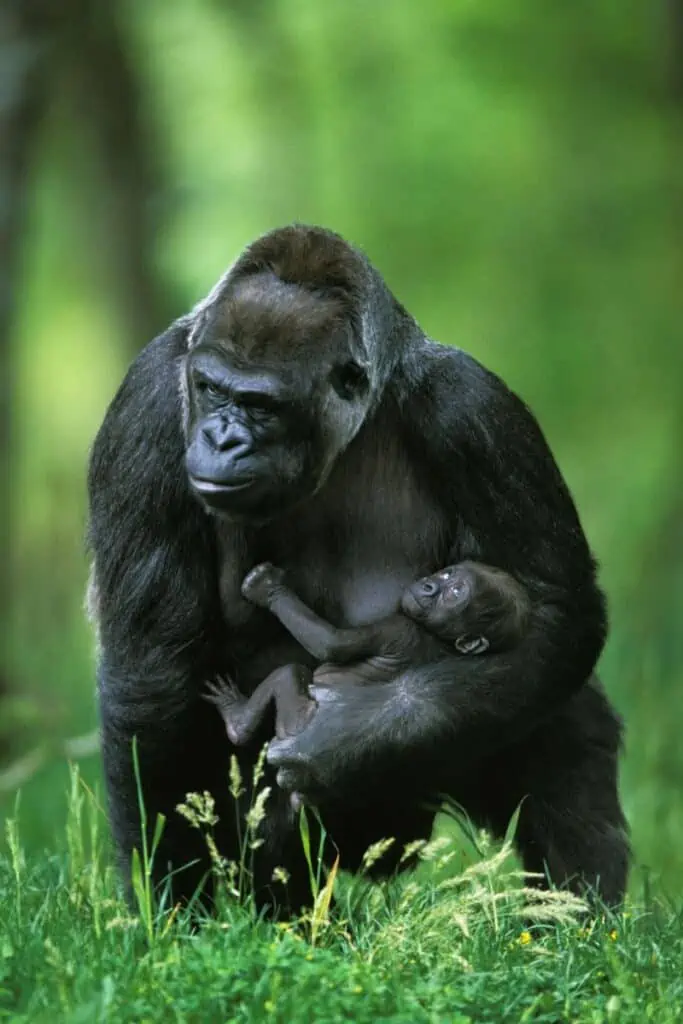
Milestones of an infant gorilla
Baby gorillas develop and grow much more quickly than human babies. At about eight weeks, the infant can be seen playing, smiling, and bouncing on its mother’s lap.
Baby gorillas will begin crawling at nine weeks, and at about three months, they will start to explore their immediate surroundings.
Infant gorillas can stand independently at about 20 weeks and, by 34 weeks, can walk and travel short distances with their mother. At this age, the infant will climb onto its mother’s back and hitch a ride.
Male and female baby gorillas look very similar. Only in the adolescent year will the male become taller and develop adult male characteristics.
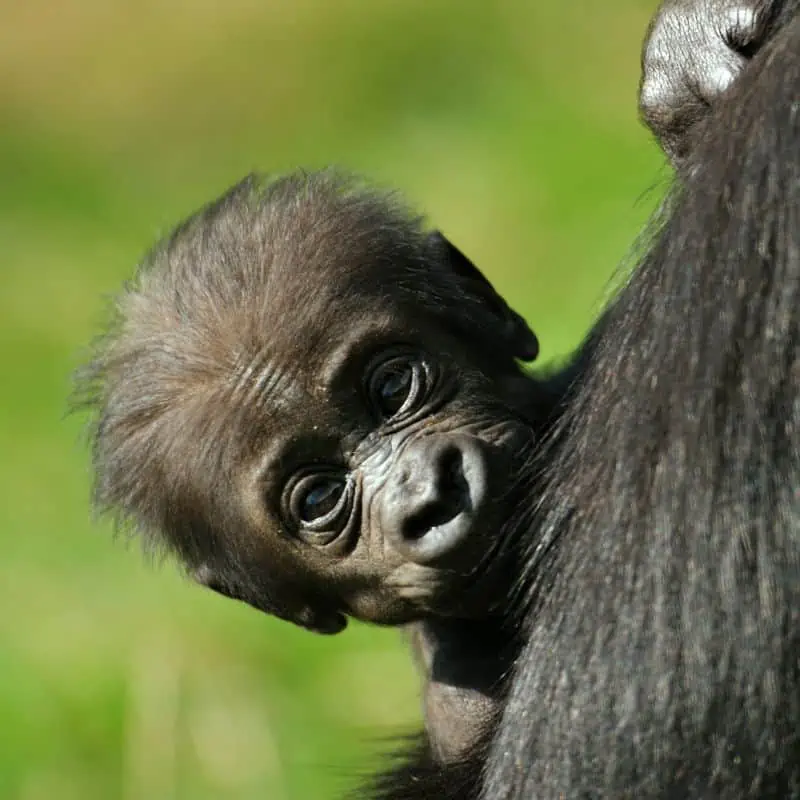
What does a baby gorilla eat?
Being a mammal, a baby gorilla will depend entirely on its mother’s milk from birth to the first five to eight months of its life.
Although they will eat solid foods after this time, the infant will still nurse until 2.5 to 3 years. The baby gorilla will eat vegetable matter like stems, bamboo shoots, leaves, roots, and fruit.
Baby gorillas and the troop will often hum and sing satisfactorily when eating. The mother will also use this way of communicating to her infant that it is time to eat.
How does a baby gorilla walk?
When starting to walk, the baby gorilla will stand upright while holding onto its mother and take a few paces on two legs (bipedally).
However, infant gorillas walk on their knuckles in the same way that their family members do.
The infant will extend its elbows, make the wrists stiff, fold its fingers on the front two limbs inward, and then proceed to knuckle walk.
A gorilla will walk this way because of its long arms, stiff back, and short legs. Walking this way helps with stability and weight bearing.
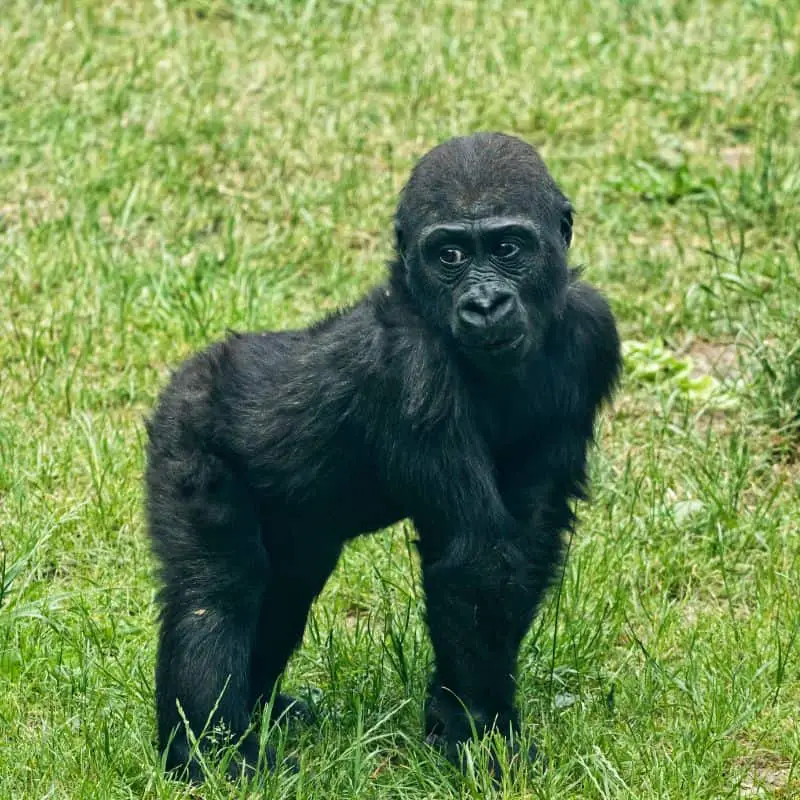
Who takes care of a baby gorilla within the troop?
The infant gorilla stays close to its mother for the first five to six months, and she will take care of her baby.
When the gorilla baby starts to roam further away at about eight months old, often older siblings and other juveniles will accompany them and care for them.
These gorillas will help with the carrying of and playing with the infant.
Baby gorillas born in the wild may not know their biological father because there is usually more than one male in the troop, although only the dominant male has mating rights with the females.
Male gorillas do play with all the older infants in the group.
How long do young gorillas stay with their mother?
Baby gorillas will stay with their mother for three to four years. All this time, the mother will attend to and support her infant.
The young gorilla will learn by copying its mother, other juveniles, and adults in the troop.
Young gorillas will fight and wrestle with each other, which teaches them how to protect themselves in the wild.
Where does a baby gorilla sleep?
The baby gorilla will sleep in a nest made by its mother. The nest is either made in trees or on the ground and is created from grasses and bent branches.
An hour before dark, the mother gorilla will take her infant into the nest to rest for the night.
Some gorillas might also build a nest for sleeping during the day.
The baby gorilla will only participate in the nest building at three years of age but still stay close to its mother.
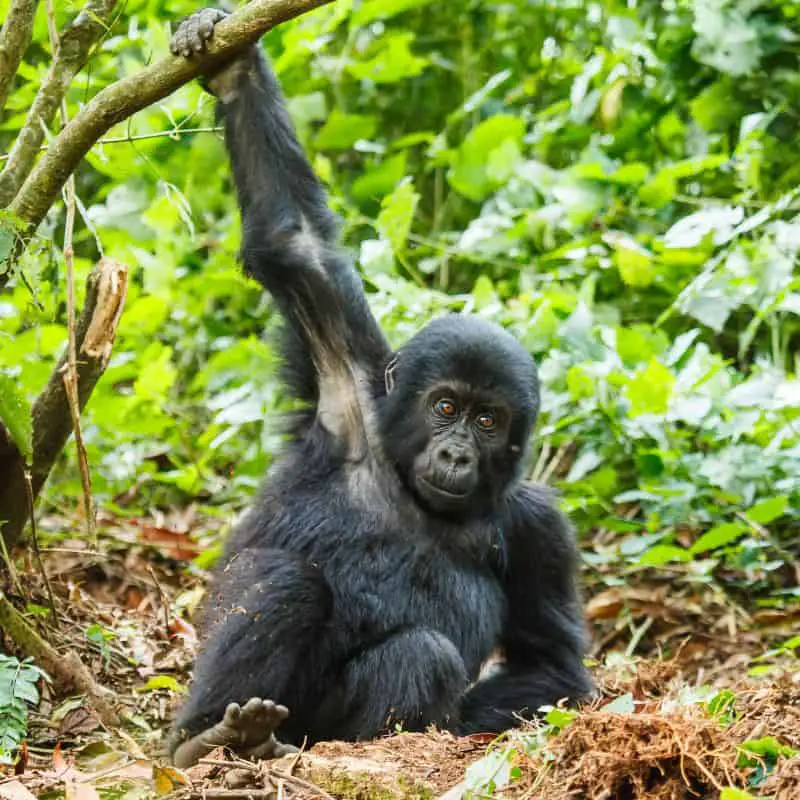
Do baby gorillas have natural predators?
Because they are small and helpless at birth, baby gorillas are vulnerable to natural predators like leopards.
Humans who set traps for other animals also threaten baby gorillas, who often get caught in these snares. The infants are injured in these traps or are killed.
Gorilla mothers usually have a male gorilla who leads the troop that she will remain close to while she has an infant.
But unfortunately, there are times when other males in the troop will target young gorillas when they interact within the group and attack and kill them.
The countries where gorillas can be found have problems with illegal trading and poaching of these animals.
Although there is a ban on this, these countries have a weak law system, and the illegal trade continues.
Are baby gorillas on the endangered list?
Threats to the survival of baby gorillas and the gorillas in their troop are habitat destruction, capturing young baboons for trade, and poaching these animals for their meat.
Gorillas are also susceptible to disease, which has been the cause of many deaths.
Gorillas are on the endangered list. Many conservation programs have been launched and are still ongoing to protect these animals.
The baby gorillas born in captivity have a better chance of survival but are not placed back into the wild.
These programs protect and monitor gorillas in areas close to their natural habitat, such as national parks.
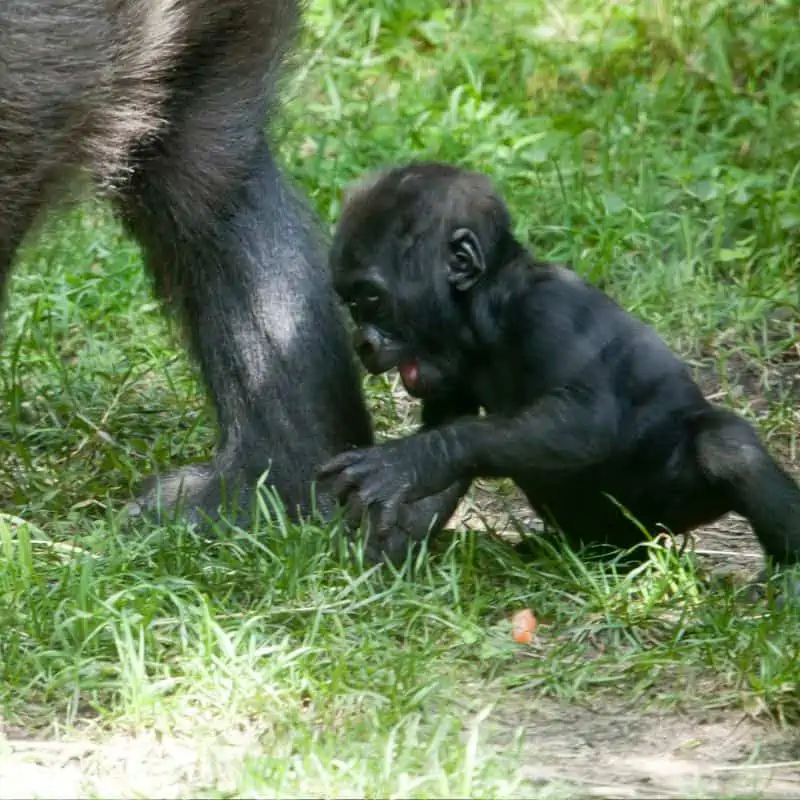
Final thoughts on baby gorillas
Baby gorillas are tiny and vulnerable when they are born and are nourished and protected by their mother for the first two to three years of their life.
Baby gorillas will learn from their mothers and other gorillas within the troop.
Baby gorillas and their families are on the endangered list, and conservation programs are in place to protect these beautiful primates.
